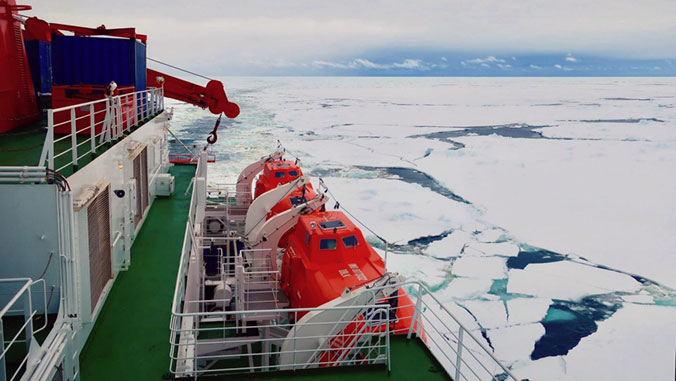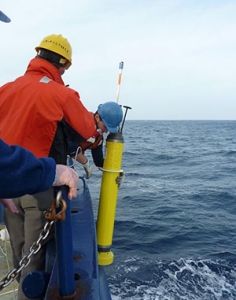
Changes in ocean physics, chemistry and biology are occurring in response to human activities. In an effort to use satellites and ocean floats to gain new insights into the global ocean and climate change, University of Hawaiʻi at Mānoa oceanographer Seth Bushinsky received an infusion of support through four grants totaling more than $2.7 million. The grants come from the National Oceanic and Atmospheric Administration (NOAA), the National Science Foundation (NSF) and the National Aeronautics and Space Administration (NASA).

Bushinsky, an assistant professor in the UH Mānoa School of Ocean and Earth Science and Technology (SOEST), and collaborators will bring together existing ocean observation data from around the world and make new measurements to understand critical carbon cycle processes in the North Pacific and Southern Oceans. Together, these diverse efforts will offer a big picture of global ocean dynamics and a deep dive—literally and scientifically—into the complex interplay of biology, physics and chemistry in the two study locations.
“Understanding the mechanisms that determine when and how the ocean takes up carbon and oxygen from the atmosphere is important to our fundamental knowledge of ocean biogeochemistry and to our ability to model future climate,” said Bushinsky.
This work is an example of UH Mānoa’s goal of Excellence in Research: Advancing the Research and Creative Work Enterprise (PDF), one of four goals identified in the 2015–25 Strategic Plan (PDF), updated in December 2020.
Making global data accessible, consistent
A worldwide array of Argo profiling floats carries multiple sensors to measure changes in temperature, oxygen, nitrate, carbon and acidification throughout the ocean—from surface to the deep.
“Although this network of floats enables global monitoring of the oceans, there are no unified float datasets that integrate all observations,” said Bushinsky. “Our NOAA-funded project will assess and adjust observations from the international Argo float database to produce an internally consistent global database. Beyond our immediate interests in changes to ocean oxygen and carbon, this tool will be invaluable to climate monitoring and modeling communities, for example, or to ecosystem modelers interested in ocean health and fisheries management.”
North Pacific deep dive
With funding from NSF, Bushinsky and co-investigators will deploy five new Argo floats in an area of the western North Pacific Ocean called the Kuroshio Extension, where there is significant carbon dioxide uptake. Data gathered will fill a void of observations and enable researchers to link the formation of interior water to changes in carbon dioxide and oxygen, greatly advancing understanding the drivers of these changes.
“We will use these observations to both calculate the drivers of air-sea carbon dioxide and oxygen fluxes, to validate computer model projections and to link the observed mechanisms to longer-term variability and climate processes,” added Bushinsky.
Southern Ocean deep dive

The Southern Ocean is a critically important component of the global climate system that constitutes the largest oceanic sink for human-produced carbon and heat.
“In order to understand the global carbon cycle and how the uptake of atmospheric carbon dioxide will change in future, one of the most important issues is to understand contemporary ocean carbon uptake and storage,” said Bushinsky. “Our understanding of the processes governing the Southern Ocean’s role in the carbon cycle has been hampered by limited wintertime observations.”
Funding from NASA will support Bushinsky and co-investigators to assess data from newly available profiling floats in the Southern Ocean, satellite observations and model simulations to improve understanding of the mechanisms, magnitude, seasonal cycle and variability of air-sea exchange of carbon dioxide in this region.
Supporting students, future investigators
Through the Future Investigators in NASA Earth and Space Science and Technology program, Bushinsky’s graduate student Shannon McClish received funding to characterize the impact of seasonal sea ice on the productivity of microscopic plants, called phytoplankton, in the Southern Ocean.
“This study will help us determine how sea ice influences regional patterns of organic carbon production by phytoplankton which is critical to understanding the Southern Ocean carbon cycle and potential future change,” said McClish.
For more information, see SOEST’s website.
–By Marcie Grabowski

